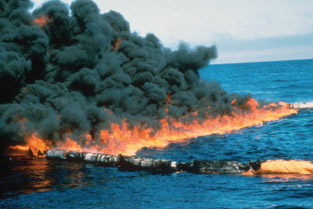
In-Situ Burning Effectiveness
ASTM International Committee F20 on Hazardous Substances and Oil Spill Response has approved several standards for in-situ burning. The latest proposed standard on this subject, WK37324, Guide for Evaluation of In-Situ Burning Effectiveness, is currently being developed by Subcommittee F20.15 on In-Situ Burning.
In-situ burning is a controlled burning, at the spill location, of oil that has spilled from a vessel or facility. This technique was used extensively in response to the 2010 Gulf of Mexico oil spill.
"The proposed guide will help standardize the evaluation of a burn and produce results that will be consistent among different users, enhancing the accuracy and credibility of the information," says Steve Potter, senior engineer and managing director, SL Ross Environmental Research Ltd., and an F20 member.
Potter notes that the committee welcomes participation in its standards developing activities. "We have recently completed standards for in-situ burning related to ignition devices, fire-resistant booms, burning in ice conditions and in marshes. As burning becomes more accepted as a response technique, we hope to broaden the scope of standards related to in-situ burning."
CONTACT Technical Information: Steve Potter, SL Ross Environmental Research Ltd. • Ottawa, Ontario, Canada • Phone: 613-232-1564 • Email: steve@slross.com O ASTM Staff: Jeffrey Adkins • Phone: 610-832-9738 • Email: jadkins@astm.org O Upcoming Meeting: Oct. 23-24 • October Committee Week • Atlanta, Ga.
 SN Home
SN Home Archive
Archive Advertisers
Advertisers Masthead
Masthead RateCard
RateCard Subscribe
Subscribe Email Editor
Email Editor